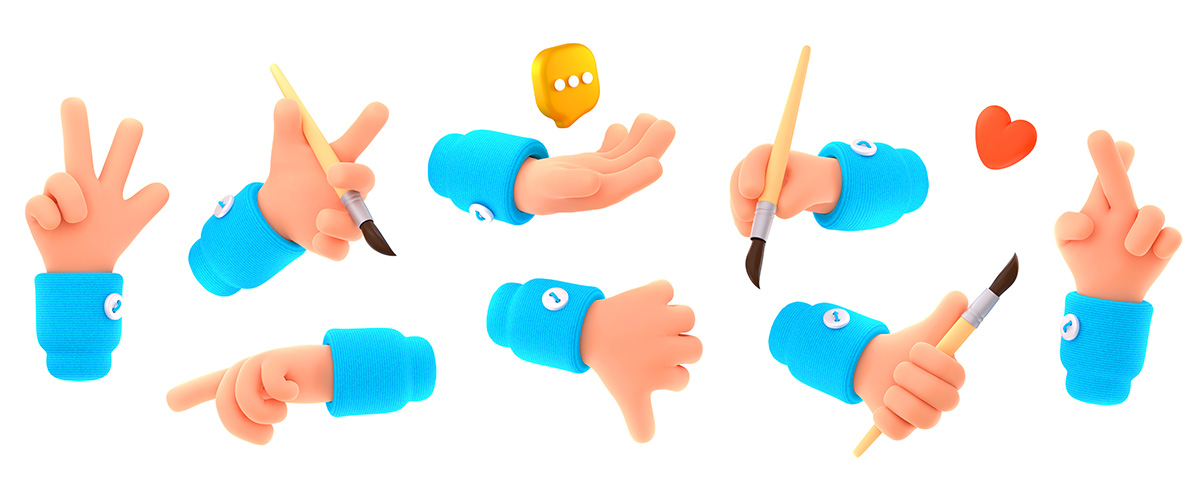User experience (UX) design is crucial for the success of a digital product or service. If your mobile app, website, e-commerce store, or cloud service is confusing, slow, and hard to use, you risk losing users. It gets even more complicated when you add international audiences, with different languages, cultures, and expectations, into the mix.
When designing software for the Brazilian market, it’s essential to consider Brazilian users’ unique characteristics and preferences. In this article, we will explore the importance of UX in software development and provide insights into creating a user-centered design that meets the needs of this diverse and dynamic Brazilian market.
Let’s dive in!
Contents
What is User Experience Design?
User Experience Design (UX) in software development refers to designing and developing easy, intuitive, and enjoyable software for users to interact with. It includes a combination of various design elements, such as the user interface (UI), the overall design and layout, the navigation and flow, and the functionality and interactivity.
Basically, good UX design covers every aspect of a software product: how quickly pages load, how easy it is for users to find everything they need, responsiveness, visual aesthetics, etc.
The process of UX design starts with user research and brainstorming different solutions. After that, designers sketch up a prototype and a visual layout of the app or website; developers program it, then it gets tested and adapted before launching a final product.
UX design aims to create functional software, provide users with a positive and satisfying experience, and ultimately drive business success. A focus on UX can differentiate a software product from its competitors and provide a competitive advantage in the market.
In the past, developers neglected user experience, leading to “overly-engineered” and hard-to-navigate interfaces. However, since almost everyone interacts with technology nowadays, it is impossible to ignore the experience of everyday users.
For Software Development Companies in Brazil, understanding and applying global UX trends while considering localization best practices is crucial for success.
UX Localization 101
UX localization means adapting user experience (UX) design and content to meet users’ cultural and linguistic needs in different regions. This involves considering factors such as language, symbols, images, and cultural norms to create a localized user interface.
Localizing UX is important because users are more likely to engage with a culturally relevant product that speaks to them in their own language, thus increasing adoption and satisfaction and helping build the product’s trust and credibility in a specific market.
UX Localization Best Practices
Ready to create the best user experience for Brazilian audiences? Here are some best practices to guide you along the way:
- Conduct research and gather data on the target audience’s cultural, linguistic, and technological preferences to inform the localization process. Hire professional UX researchers with knowledge of user psychology and the best research methodologies to get the most valuable insights.
- Ensure that the localization process is user-centered and meets the specific needs and expectations of the target audience.
- Translate content into the target language and adapt it to local cultural norms and preferences. Make sure to hire qualified translators and localization specialists to ensure that the localization process is accurate and effective.
- Ensure that the user interface (UI) is culturally appropriate and accessible, considering factors such as language, units of measurement, currency, colors, fonts, text elements, icons, etc.
- Conduct usability testing to ensure that the localized UX meets users’ expectations and provides a seamless experience.
- Monitor and improve the localized UX based on user feedback and changing market needs.
It’s important to note that proper localization should begin at the conceptual stage. As you plan and design your user experience, aim to build a platform that can adapt.
What Are the UX Design Trends for Brazil in 2023?
The country’s rapidly growing economy partly influences UX design trends in Brazil. Global trends in software and UX, such as the increasing adoption of technology and a growing emphasis on user-centered design, also play an important role. Some of the current UX design trends you should be aware of in 2023 include the following:
Mobile-first Design
With many Brazilians accessing the internet via mobile devices, mobile-first design is becoming more prevalent in UX design. This approach emphasizes simplicity and uses responsive design techniques to ensure that a user interface adapts to different screen sizes.
Personalization
As consumers in Brazil become more savvy and demanding, businesses are increasingly incorporating personalization into their UX designs to create unique, tailored user experiences. You can use data insight to inform the design features of your website or app and present users with the most relevant content.
Minimalism
A minimalist approach to UX design emphasizes simplicity and functionality and removes unnecessary elements. This results in a more efficient and straightforward user experience. Additionally, it creates a visual harmony that is pleasing to the eye and helps focus the user’s attention on the most important elements of the design.
In today’s world, where users are constantly exposed to information and distractions, a minimalist approach to UX design can help reduce cognitive overload and create a sense of calm and order.
UX design trends in Brazil: Dark Mode Interface
On par with minimalist design, businesses increasingly include a dark mode option for their software products. It is easy on the eye, especially in low-light conditions, and creates a more visually appealing and immersive user experience.
Chatbots and AI
Chatbots and AI-powered design elements are becoming increasingly popular as businesses look to automate customer interactions and create more efficient user experiences.
Voice UI
Users still have many concerns regarding voice UI, such as invasions of privacy, lack of accuracy, and misinterpretations. Still, with advancements in natural language processing (NLP) and speech recognition technology, voice UI has chances of further developing in the future, and it is a trend worth exploring.
UX writing and “Scrollytelling.”
Brands are developing innovative strategies to engage consumers through great storytelling and interactive scrolling. “Scrollytelling” is a creative way for brands to tell a story in small portions and engage the user by continuing the text with each scroll. It improves text-heavy blogs, websites, or applications by making them easily digestible.
Additionally, UX writing and microcopy assist brands in showcasing their unique brand image. As an increasingly important part of UX design, UX writing focuses on the tone of voice your digital product uses to communicate with users. Since microcopy is frequently brand-specific, it provinces a great chance to connect emotionally with your audience.
AR, VR & 3D Elements
3D, VR, and AR technologies allow UX designers to present information and content in innovative and dynamic ways. For example, designers can use 3D animations and graphics to bring products to life and create immersive and interactive environments, such as virtual tours or product demonstrations. Designers can also use these technologies to create engaging and effective educational experiences for their users.
UX design trends in Brazil: Test and Adapt for the Best Localized UX Design
There are many factors to consider if you’re trying to build digital products for Brazilian markets, as the software world is rapidly changing and evolving. Overall, it is important to gain an understanding of the local population through testing and research and create simple, effective, and modern interfaces.
Good luck!

